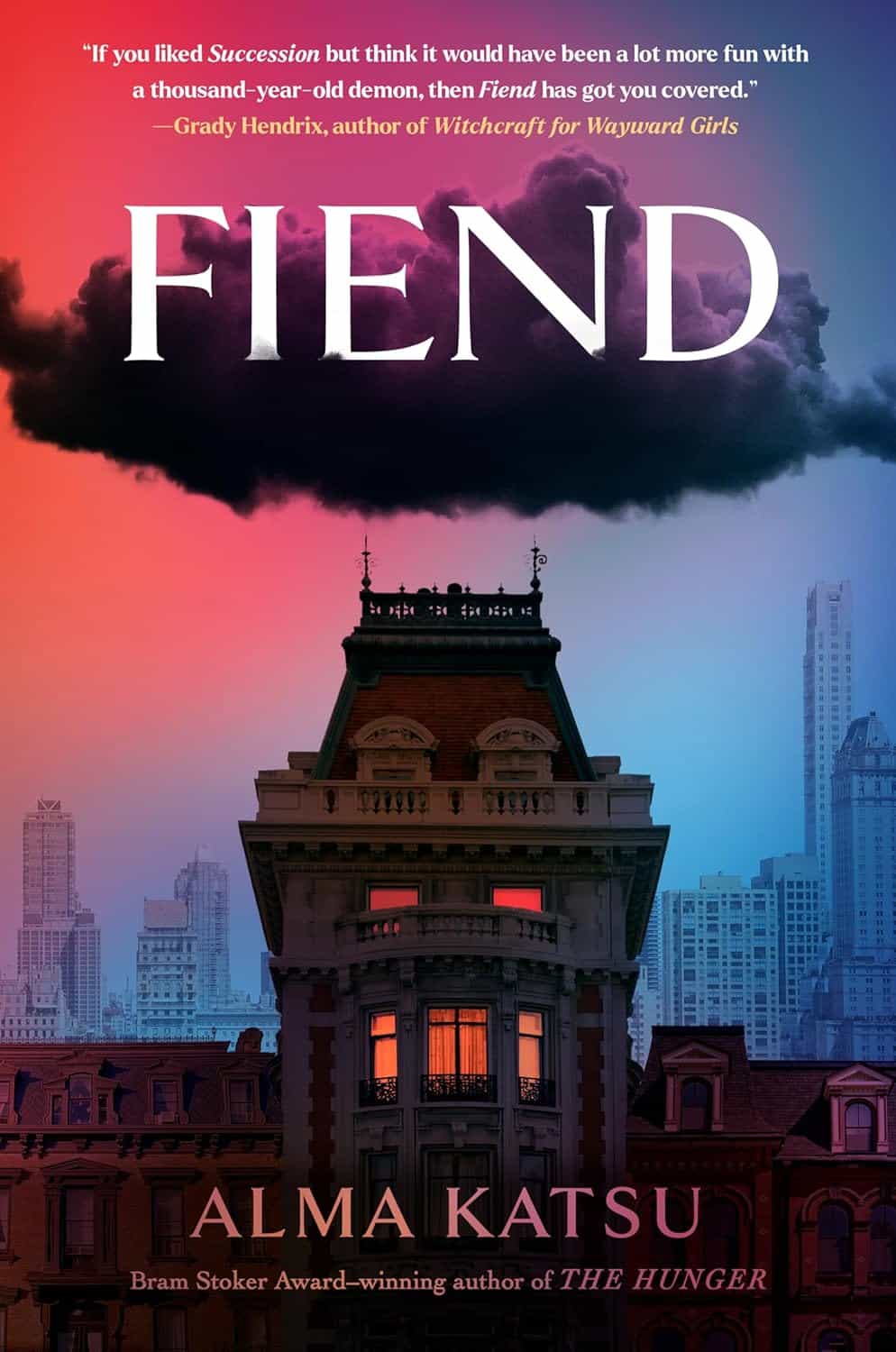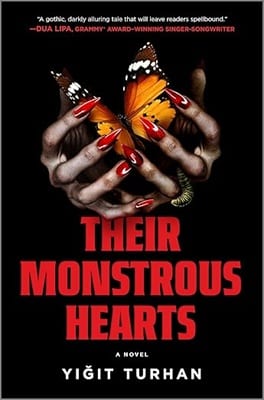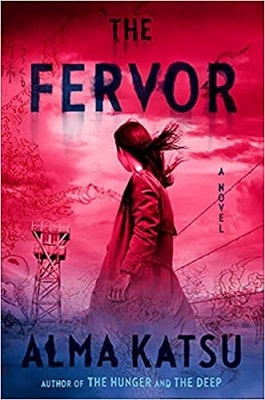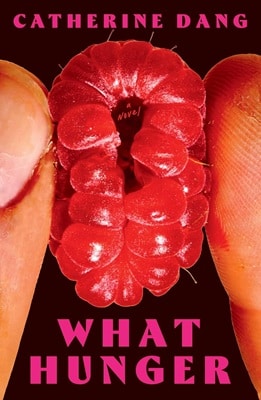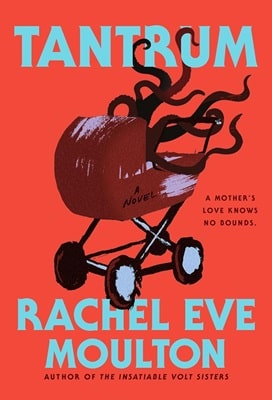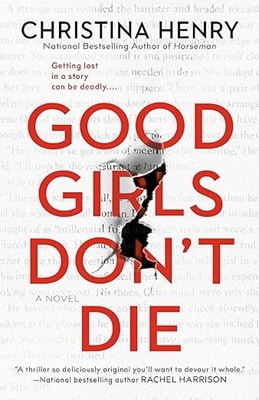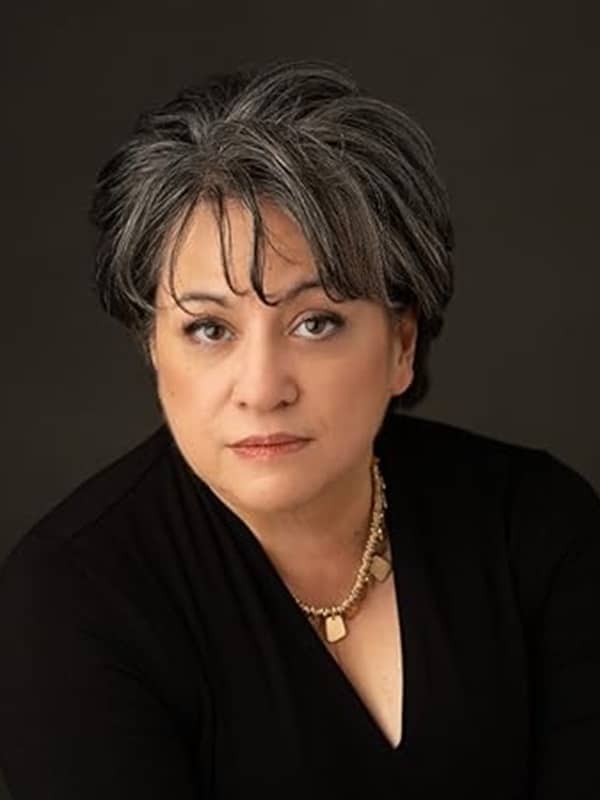
Q&A
Alma Katsu
Ms. Katus’s debut novel, The Taker, was selected by Booklist as one of the top 10 debut novels of 2011. She is a graduate of the Johns Hopkins Writing Program and Brandeis University, where she studied with novelist John Irving, and an alumni of the Squaw Valley Writers Conference. Like many writers, she has a day job, too: for over 30 years, she was an intelligence analyst for the federal government and RAND, and is currently a consultant on emerging technology.
Q: What can you share about your family’s background and your childhood?
Alma: I’m half Japanese, half Portuguese. My parents met when my father was stationed at Camp Zama in Japan, after WWII. My father was in the Army, a quartermaster, and my mother was a seamstress tailoring GI’s uniforms. I never knew my grandparents, on either side. (For the record, I don’t have much of a Portuguese side. My father didn’t speak the language, wasn’t close to any Portuguese community.)
My childhood was rough. We were economically disadvantaged. Neither of my parents finished high school. My father had been a kid during the Depression and quit school to work. He was 16 years older than my mother. My mother’s life was disrupted by the war and the hardship she and her family endured scarred her and stayed with her for her entire life. I drew on this to a degree in writing The Fervor. She never got over leaving Japan and never became “American,” either.
Q: You were born in Alaska and grew up in Massachusetts?
Alma: I was a service brat. We were stationed at Fairbanks, Alaska when I was born (Alaska became a state the same year I was born!). We left when I was three, so I have no memories aside from the black and white family movies my father took. I remember having a book of Inuit folktales and another of Kodiak bears and other things just waiting to kill you. I hope to return to Alaska one day but haven’t made it yet.
In Massachusetts, we lived in a very small town wedged between richer, historic places like Concord and Lexington. Everything in New England seemed haunted at the time, with stories of ghosts and murder everywhere. They made my childhood very Gothic and cemented my Gothic tastes and tendencies. This comes through very strongly in my debut novel, The Taker.
Q: How did you get into a career in intelligence, and how much can you share about your work?
Alma: I got into intelligence by chance. I graduated from Brandeis University during a recession. Jobs were hard to come by. I was writing as a stringer for a couple newspapers while writing short stories on the side, but I wanted to be a novelist. But everyone told me I was too young to write a book, and that I needed life experience.
One of my older sisters suggested that I take the test for employment with the National Security Agency. She’d heard all these crazy stories about it—the super secrecy, that you had to marry someone else who worked there, crazy gossip from the before-internet times. I had no interest in national security but when the job offer came through, Reagan was cutting education and I worked at a college, so I left my job and moved to Washington DC, determined to earn some of the life experience that I needed to be a novelist.
I ended up staying for about 35 years, with another six hired back as an independent contractor after retirement.
I had an amazing career with the National Security Agency and CIA as an analyst and in research and development, and then with RAND, the quasi-governmental think tank. I was in the Office of the Secretary of Defense (OSD) for the Iraq War planning (seems like ancient history now, but it was an incredibly fraught time in our nation’s history). I was, at one point, a National Intelligence Officer (a big deal). I was on one of the very first teams of hackers and would use this experience later in my career when I was the senior analyst in charge of figuring out whether there was intelligence value in social media, back in the mid-2000s. I was the government director of a DOD research lab, and ended my career trying to help NSA set up a technology forecasting capability, something I learned when at RAND. After retirement, CIA hired me back to work in technology forecasting and writing for them on emerging tech trends. I’ve also advised private companies—tech start-ups—on analytic methods and how to apply their tools to intelligence problems.
Q: So how does the person you just described go on to write horror fiction?
Alma: For a couple reasons. First, I loved speculative fiction growing up. I read widely, but I loved Edgar Allan Poe, Clive Barker. Poe, in particular, was a big influence I think, because I was very young when I read his stuff.
Secondly, in the 1990s, because of my job at the time I followed genocides and mass atrocities. Watching thousands of people rise up at the behest of an autocrat and wipe out thousands of their neighbors, whew, that’ll teach you that we’re scared of the wrong things. There’s a monster inside all of us, and that monster can be let loose if the right buttons are pushed.
The Wehrwolf, an Amazon Original Story and winner of a Bram Stoker award, draws most directly on that particular work experience. It’s about a timid man in Germany at the end of WWII, when the Allies are about to cross the border. The village bully talks him into joining a resistance unit he’s formed, but one with a supernatural difference. Too late he sees the danger in militias, after it costs him everything. I wrote the story to make a point: whenever there’s a genocide, there’s always a militia to provide intimidation and deadly force. You can’t kill a lot of people with just the military alone. You need the public to participate and an armed gang makes the cowards a little braver.
Q: What’s different about writing contemporary horror as opposed to historical horror?
Alma: Because The Hunger and The Deep, the first two of my historical horror novels, were based on real life events, they required a lot of research. The Fervor, which was about the Japanese internment, meant less research because it was a topic close to home—my husband’s family had been interned. So I could bring a very realistic Japanese American POV to the internment.
With FIEND, I could set my imagination free, make up whatever I wanted or needed. Which has its scary moments, too; there are no handrails to lean on if you’re coming up blank. The main thing, though, is that both kinds of novels are trying to impart a lesson, and those lessons always seem to swing back to history, that we need to learn from the past or be doomed to repeat it. We humans can’t seem to break that cycle.
Q: You write in two distinct genres—spy and horror. How do those worlds collide or overlap for you, if at all?
Alma: I see horror in everyday life. There’s horror in what happens in the world, whether it’s the unlimited greed of certain world leaders or (as mentioned with genocides) that almost anyone can be persuaded to pick up a machete and hack their neighbors into little pieces. Or the horror of realizing that elected officials are lying to their constituents in order to enrich themselves and don’t care how many of their constituents’ sons and daughters they have to sacrifice to the war machine to do it (I’m thinking of the Iraq War and that stint in OSD).
The trouble is that the audiences for the two genres tend to be distinct and separate, so there’s little room for a way to put them together beyond a rather predictable “the President’s a werewolf” kind of thing, and I don’t feel I can dishonor the work of my former colleagues by writing that. The closest I came is Black Vault, an Amazon Original Story, which is kind of like Slow Horses meets The X-Files. It’s been optioned for TV and has a showrunner and is moving ahead in development.
Q: Is horror fiction a way to help readers process real-life horror in the world? Does it make it more palatable that there’s a demon in control than that a certain someone gained power “honestly” or “fairly”?
Alma: Making a horror element responsible for the bad things happening in a story is a way to lead readers into an uncomfortable subject, for a couple reasons. One is that most of us start our relationship with stories through fairy tales, which pin events on the supernatural or magical. The princess is saved by a talking frog who is really an enchanted prince! A wolf eats your grandmother and dresses up as her, and then tries to eat you, too! It’s the sugar that gets you to swallow the bitter pill of truth.
Secondly, and this is something that drives me crazy, is that many adults refuse to believe evidence that is right in front of their eyes. They prefer to cling to impossible theories because they just cannot accept that someone did something reprehensible. Some do this because they’ve been chided for believing in the worst about a person; this happens a lot with women, taught from a young age not to trust our instincts (“Oh, I don’t want to think the worst of him. That’s not nice.”). Others because they want to be seen as iconoclasts, brilliant outside-the-box thinkers who can’t accept what’s in front of their noses. Sorry, I’m an old analyst and can’t abide sloppy critical thinking.
Q: What are the challenges of being a female writing in the horror genre as opposed to a male?
Alma: The Hunger was well received by the horror community, so at the time I didn’t feel much of a bias. But looking back, I think that’s because there were plenty of male characters, including the one you might think of as the lead or the hero, and it was set in the old West, so it appealed to male readers, too.
I’ve since come to believe there is still a bit of a bias against female horror writers (like there is against women by society). Before my first book was published in 2011, there was a vocal part of the horror community that refused to believe women could write horror at all, that women couldn’t conceive of the darkness in the same way that men could—which is posturing bullshit. Usually, I would ask them how many mass graves they’ve presided over and they shut up.
Most of the bias these days is unintentional, I think, just the general assumption that women can’t be brilliant as men, that if a woman does something it’s “expected” but if a man does it, then it’s “exceptional.” I certainly saw a lot of this in the government. (Be happy to back this up with many, many stories.) You get demerits for not being pretty, you get demerits for being too pretty (“not serious”). You have to do make-up and hair and wardrobe when your male counterparts can get away with an un-ironed flannel and old band tee-shirt. Like Ginger Rogers says, I’d like for once not to have to do it in high heels and going backwards.
Q: Who are some of the female horror writers you admire?
Alma: It’s amazing how many female horror writers there are! Some only write horror, some write horror in addition to other genres.
Jennifer McMahon is a dear friend who started at about the same time that I did. Some people consider her horror a bit gentler. Great book club reading.
Catriona Ward. The Last House on Needless Street, her breakout book, was a tour-de-force of voice.
Silvia Moreno-Garcia often combines genres, though usually there is horror in her works, and often, historical. Mexican Gothic was her breakout book.
Rachel Harrison writes horror with an almost chick-lit tone, but always feminist in nature.
CJ Leede writes more hard-edged horror. Her debut, Maeve Fly, got a lot of praise.
Then there are the more literary horror types, like Mona Awad and Mariana Enriquez. And there are new women authors writing horror all the time.

